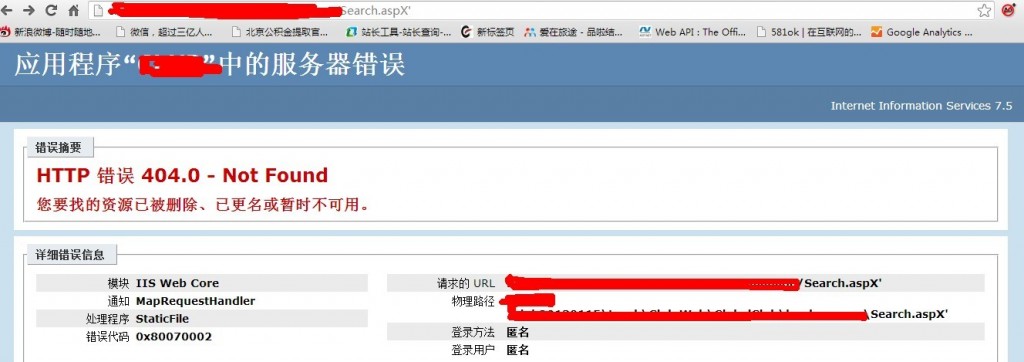当前位置:编程学习 > C#/ASP.NET >>
答案:[C#]using System;using System.IO;using System.Threading;using System.Runtime.InteropServices;public class BulkImageProcAsync{public const String ImageBaseName = "tmpImage-";public const int numImages = 200;public const int numPixels = 512*512;// ProcessImage has a simple O(N) loop, and you can vary the number// of times you repeat that loop to make the application more CPU-bound// or more IO-bound.public static int processImageRepeats = 20;// Threads must decrement NumImagesToFinish, and protect// their access to it through a mutex.public static int NumImagesToFinish = numImages;public static Object NumImagesMutex = new Object[0];// WaitObject is signalled when all image processing is done.public static Object WaitObject = new Object[0];public class ImageStateObject{public byte[] pixels;public int imageNum;public FileStream fs;}public static void MakeImageFiles(){int sides = (int) Math.Sqrt(numPixels);Console.Write("Making "+numImages+" "+sides+"x"+sides+" images... ");byte[] pixels = new byte[numPixels];for(int i=0; i<numPixels; i++)pixels[i] = (byte) i;for(int i=0; i<numImages; i++){FileStream fs = new FileStream(ImageBaseName+i+".tmp", FileMode.Create,FileAccess.Write, FileShare.None, 8192, false);fs.Write(pixels, 0, pixels.Length);FlushFileBuffers(fs.Handle);fs.Close();}Console.WriteLine("Done.");}public static void ReadInImageCallback(IAsyncResult asyncResult){ImageStateObject state = (ImageStateObject) asyncResult.AsyncState;//Console.WriteLine("Image "+state.imageNum+" was read"+(asyncResult.CompletedSynchronously ? "synchronously" :"asynchronously"));Stream stream = state.fs;//(Stream) asyncResult.AsyncObject;int bytesRead = stream.EndRead(asyncResult);if (bytesRead != numPixels)throw new Exception("In ReadInImageCallback, got wrong number of bytesfrom the image! got: "+bytesRead);ProcessImage(state.pixels, state.imageNum);stream.Close();// Now write out the image.// Using asynchronous IO here appears not to be best practice. It ends up// swamping the threadpool, since the threadpool threads are blocked// on IO requests that we've just queued to the threadpool.FileStream fs = new FileStream(ImageBaseName+state.imageNum+".done",FileMode.Create, FileAccess.Write, FileShare.None, 4096, false);fs.Write(state.pixels, 0, numPixels);fs.Close();// This application model uses too much memory.// Releasing memory as soon as possible is a good idea, especially global// state.state.pixels = null;// Record that an image is done now.lock(NumImagesMutex){NumImagesToFinish--;if (NumImagesToFinish==0){Monitor.Enter(WaitObject);Monitor.Pulse(WaitObject);Monitor.Exit(WaitObject);}}}public static void ProcessImage(byte[] pixels, int imageNum){Console.WriteLine("ProcessImage "+imageNum);// Do some CPU-intensive operation on the image.for(int i=0; i<processImageRepeats; i++)for(int j=0; j<numPixels; j++)pixels[j] += 1;Console.WriteLine("ProcessImage "+imageNum+" done.");}public static void ProcessImagesInBulk(){Console.WriteLine("Processing images... ");long t0 = Environment.TickCount;NumImagesToFinish = numImages;AsyncCallback readImageCallback = new AsyncCallback(ReadInImageCallback);for(int i=0; i<numImages; i++){ImageStateObject state = new ImageStateObject();state.pixels = new byte[numPixels];state.imageNum = i;// Very large items are read only once, so you can make the// buffer on the file stream very small to save memory.FileStream fs = new FileStream(ImageBaseName+i+".tmp",FileMode.Open, FileAccess.Read, FileShare.Read, 1, true);state.fs = fs;fs.BeginRead(state.pixels, 0, numPixels, readImageCallback, state);}// Determine whether all images are done being processed.// If not, block until all are finished.bool mustBlock = false;lock (NumImagesMutex){if (NumImagesToFinish > 0)mustBlock = true;}if (mustBlock){Console.WriteLine("All worker threads are queued... Blocking until theycomplete. numLeft: "+NumImagesToFinish);Monitor.Enter(WaitObject);Monitor.Wait(WaitObject);Monitor.Exit(WaitObject);}long t1 = Environment.TickCount;Console.WriteLine("Total time processing images: {0} ms", (t1-t0));}public static void Cleanup(){for(int i=0; i<numImages; i++){File.Delete(ImageBaseName+i+".tmp");File.Delete(ImageBaseName+i+".done");}}public static void TryToClearDiskCache(){// Try to force all pending writes to disk, and clear the// disk cache of any data.byte[] bytes = new byte[100*(1<<20)];for(int i=0; i<bytes.Length; i++)bytes[i] = 0;bytes = null;GC.Collect();Thread.Sleep(2000);}public static void Main(String[] args){Console.WriteLine("Bulk image processing sample application, usingasync IO");





